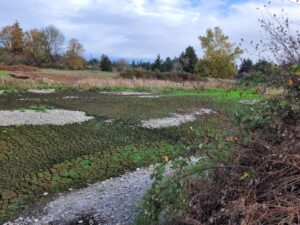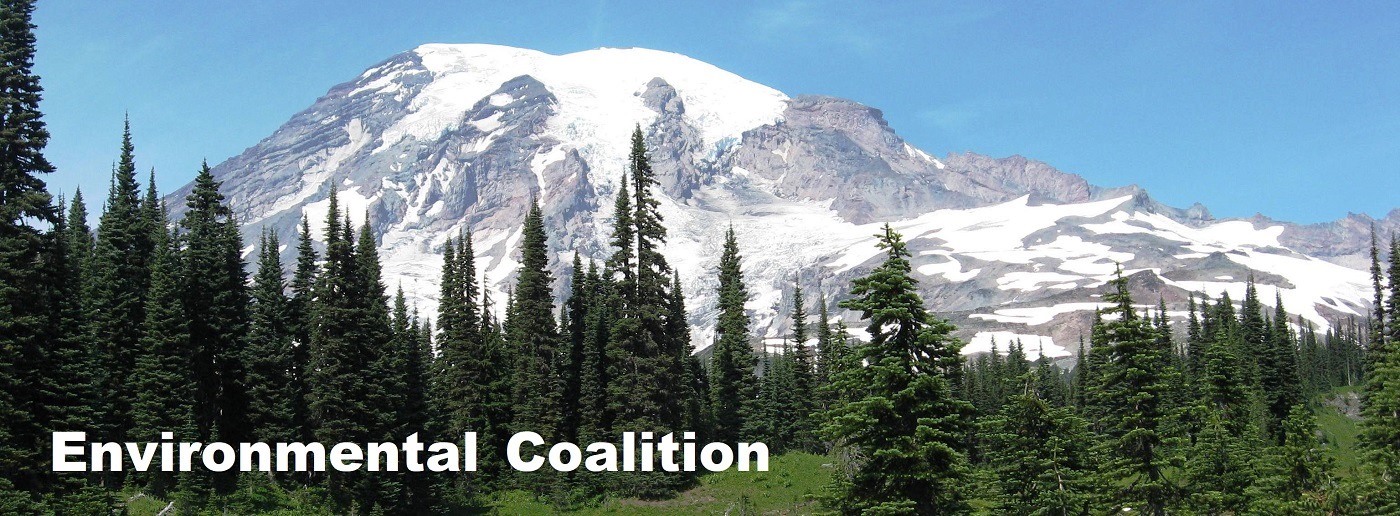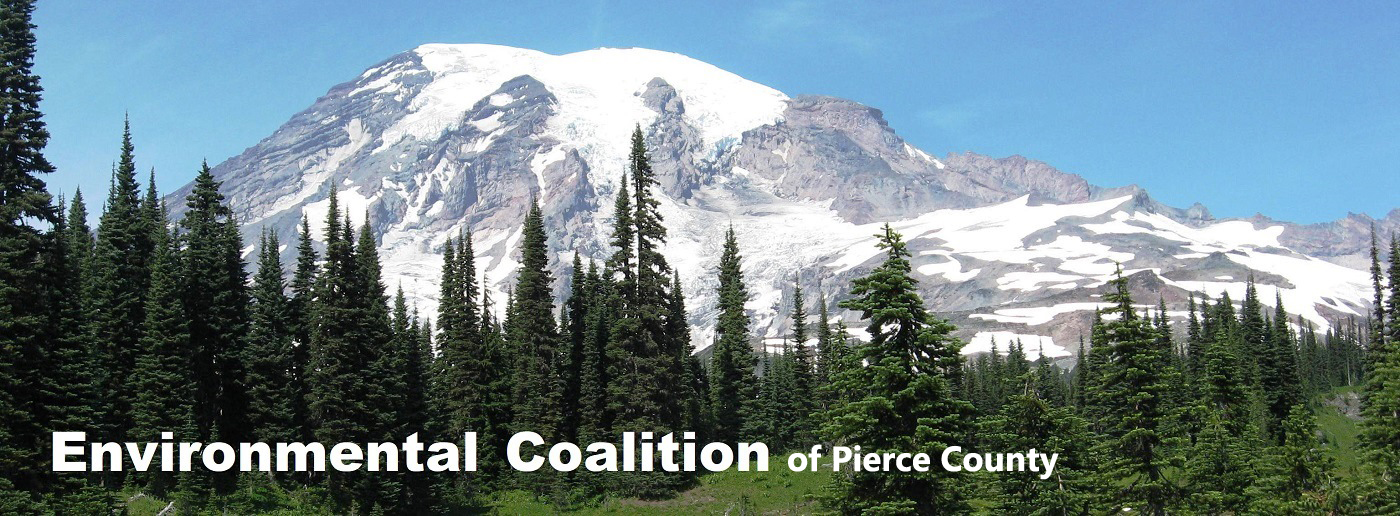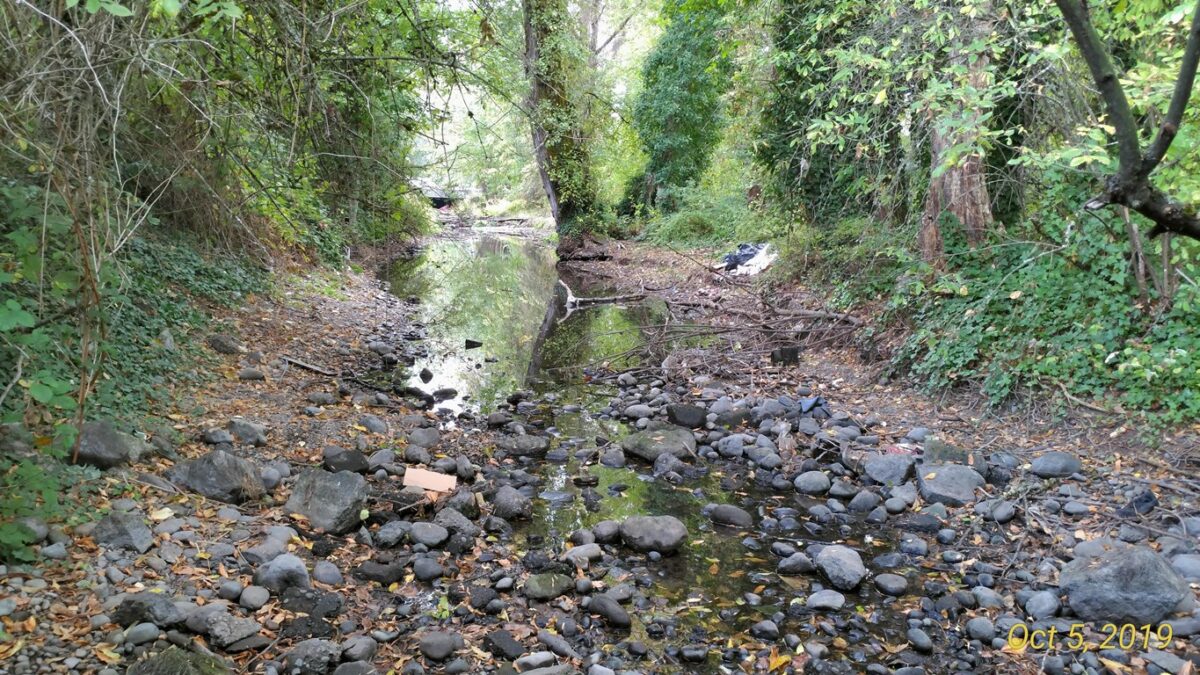by Marianne Lincoln
Today at the Sustainability Expo in Tacoma, I worked at the table for the Clover Creek Restoration Alliance. We were next to the booth for the Nisqually Land Trust. Everyone walking by knew of the Nisqually River, yet they looked puzzled at our banner for Clover Creek.
So, I asked everyone who walked by, “Do you know where Clover Creek is?”
The answer was usually, “No.” Unless they actually lived on the creek. I guess we have some work to do teaching people about their watershed. Luckily, there was a large map in front of me.
I pointed to Chambers Bay. Most people were familiar with the golf course and park in University Place. Then I pointed to the creek entering Chambers Bay, called Chambers Creek and how it came from Steilacoom Lake in Lakewood. They were tracking.
On the south end of Steilacoom Lake, I pointed out there was a creek entering the lake. That is Clover Creek, I’d note. See how it flows from underneath McChord Field? They knew where McChord Field was. Their eyes would widen realizing there were giant culverts for a creek under the airfield.
From there it was easier to say Parkland, PLU, Spanaway Lake, Pacific Avenue, Frederickson, Tacoma Sportsman’s Unit, and all the way to Graham were part of the watershed.
Voila! A watershed made up of a large rainwater basin, not connected to Mt. Rainier or the Cascades in any way. A sole source aquifer from rain was where most of the south county prairie area got its water. Growth in this region is causing stress on the groundwater.
Filth and garbage in the creek bed connects to that groundwater we are drinking from wells. Runoff from the roads, if not purified before entering the creek, is also polluting the creek reliant creatures and our groundwater.
Sewers, in order to move human waste out of the area also takes a large quantity of our freshwater out to Chambers Bay and dumps it into the salt water of Puget Sound. This is another source of freshwater loss.

Parts of Clover Creek are now dry over 9 or 10 months of the year. Beavers in Brookdale hold back some water in the Frederickson area, but east of Canyon the creek goes dry as does Parkland and parts of Lakewood. The dynamics of pulling out groundwater through wells to satisfy the thirst, toilets, laundry, yards, and gardens of thousands of new residents, is straining the system.
The shallow aquifers of Parkland cannot keep the creek full when they are drained. The salmon that used to thrive there disappeared in the 1940s. In the 1960s, the flooding creek was redirected into an asphalt-lined ditch along Tule Lake Road to keep the PLU campus from flooding.
Where is Clover Creek? Well, it still is in that same creek bed on the PLU Campus flowing past Keithley Middle School, just underneath the surface. Because we have not invented a way to move the groundwater system that flowed underneath it. And that explains why the Spanaway Loop Road project has been delayed for so long. They have to dewater that spot and the groundwater 30 feet underneath still flows where the contractor needs to lay the pipes.
Meet Clover Creek Restoration Alliance, formerly known as the Clover Creek Council. We have documented the creek system and the watershed along with the Chamber Clover Creek Watershed Council partners for many years. It’s a labor of love. There’s one hundred and seventy-five years of human errors to fix in the system. It will likely never again be what it was.
Learn more about aquifer recharge, filtering storm drains, and bringing fish back to the creek:


